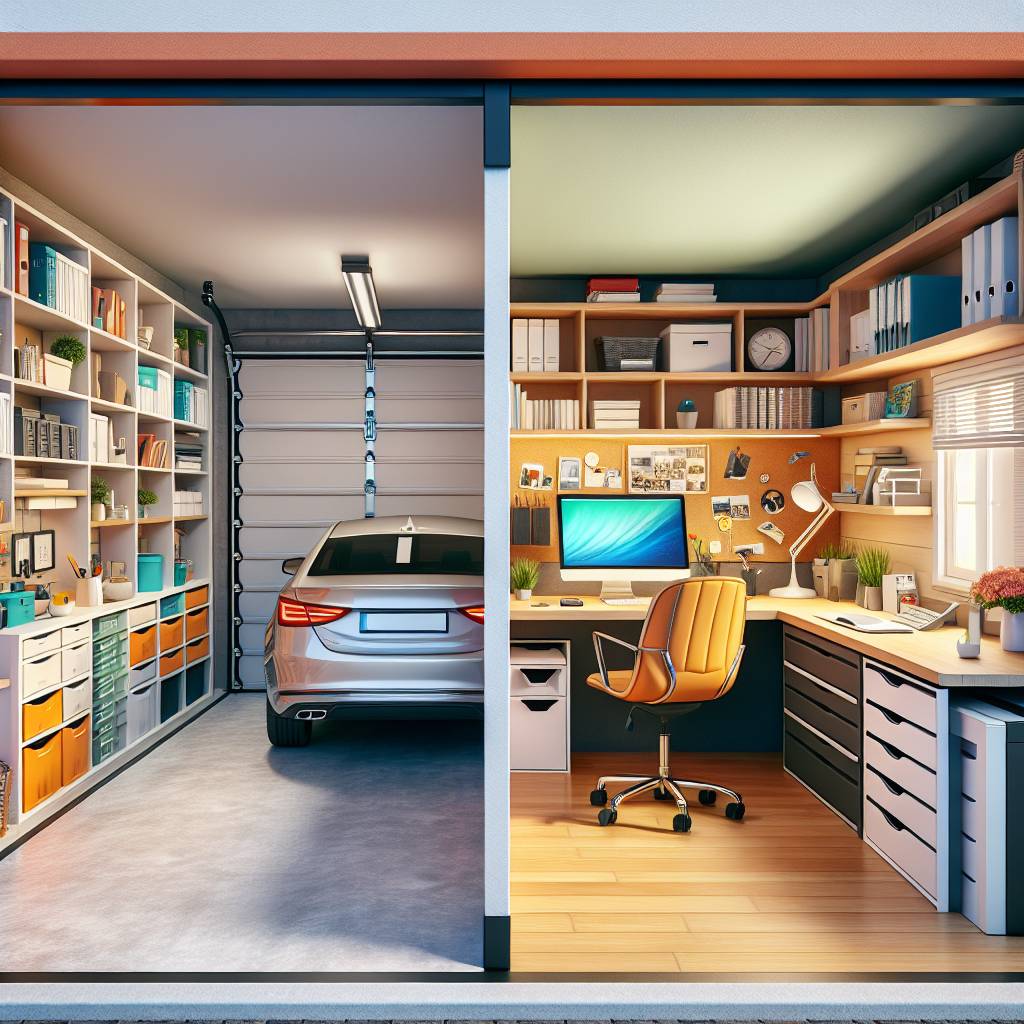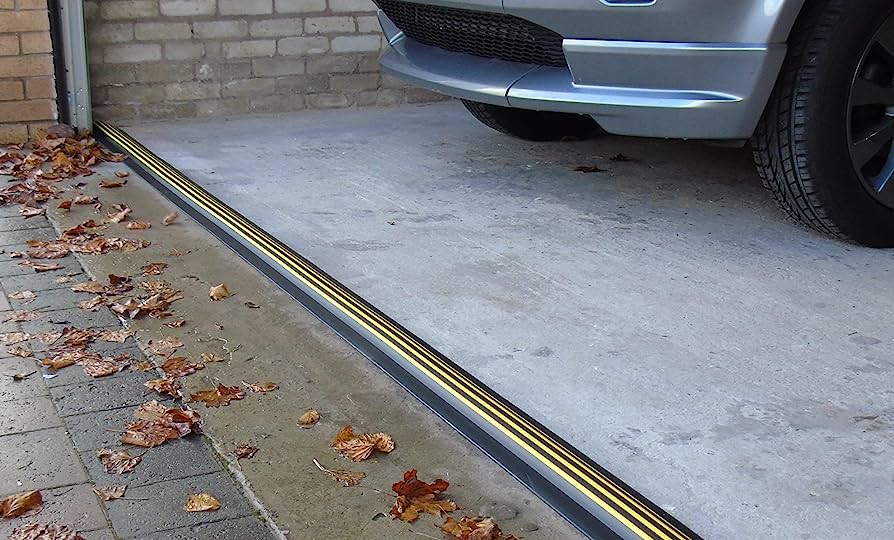Ever dreamed of having your own dedicated workspace right at home? Converting your garage into a home office could be the game-changer you’ve been looking for. Transforming this underutilized place into a dedicated home office can provide the perfect blend of comfort and productivity. From insulation and lighting to storage solutions and decor ideas, we’ve got you covered with everything you need to know.
Ready to turn that neglected garage into a functional workspace that inspires creativity? Whether it’s for business or personal projects, creating an inviting home office in your garage is within reach.
Assessing Your Garage Space
The first step is assessing the space available. Start by measuring the size and layout of your garage. Consider where windows, doors, and other features are located as these will impact how you can set up your home office.
Evaluate any potential challenges for conversion, such as low ceilings or limited natural light. These factors will influence how you design and furnish your home office. Understanding the existing features of the space is crucial in planning an efficient and functional home office.

Next, determine the primary purpose of your home office. Will it be solely used as a workspace, or do you need to incorporate storage areas or meeting spaces? Identifying specific functional requirements for your workspace will help guide decisions on furniture, lighting, and storage solutions.
Consider any additional functions you want to incorporate into your garage-turned-office. For example, if you plan to use part of the space for client meetings or video calls, this may require additional seating arrangements or background considerations.

Take note of any structural limitations in the garage that could impact its conversion into a home office. Structural elements like support beams and electrical wiring should be considered when planning out where furniture and equipment will be placed within the space.
When evaluating design constraints, consider how to work around existing design elements such as built-in shelving units or permanent fixtures like water heaters or laundry facilities that cannot be relocated easily.
Addressing potential design challenges upfront ensures that you can create a practical yet visually appealing workspace without compromising on safety or functionality.
Planning Your Conversion
There are several key factors to consider in the planning stage. These include exploring different layout options, setting a budget, and establishing a timeline for the project.
Layout Options
Exploring various layout possibilities is essential when converting your garage into a home office. Consider different desk and storage arrangements that can optimize the space while ensuring functionality. For example, you might want to explore L-shaped desks or wall-mounted shelving units to maximize floor space. Plan for an efficient and ergonomic workspace setup by considering factors such as natural lighting, electrical outlet placement, and comfortable seating options.
When creating your home office layout, think about how you will use the space on a daily basis. Will you need designated areas for video conferencing? Do you require ample storage for files or equipment? By carefully considering these aspects, you can tailor the layout to suit your specific work needs.
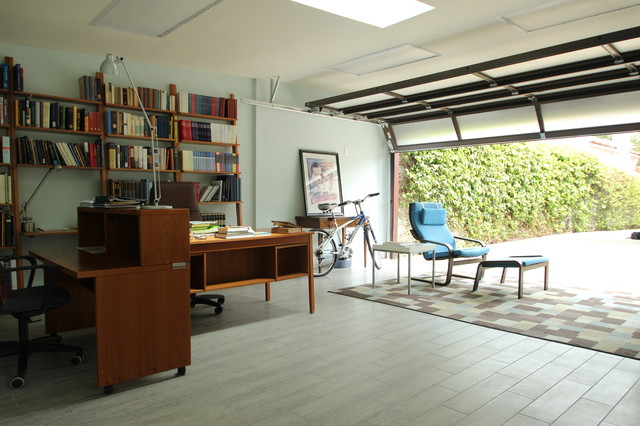
Researching online resources or seeking inspiration from interior design websites can provide valuable ideas for optimizing your home office layout. You may also find helpful tips from individuals who have already converted their garages into functional workspaces.
Budgeting
Setting a realistic budget is crucial before embarking on any conversion project. Research cost-effective options for materials and furnishings that align with your financial constraints without compromising quality. Whether it’s choosing affordable flooring solutions or finding discounted furniture pieces, being mindful of costs will help keep the project within budget.
It’s important to factor in potential unexpected expenses when setting your budget as well. This could include unforeseen repairs or modifications needed during the conversion process. By allocating funds for contingencies upfront, you’ll be better prepared to handle any surprises that may arise along the way.
To stay within budgetary limits while still achieving desired outcomes, consider DIY projects where feasible and compare prices from multiple suppliers when purchasing materials or furniture items.
Timeline
Establishing a clear timeline is essential for effectively managing the garage conversion project. Break down each phase of the transformation into manageable stages that can be completed sequentially without feeling overwhelming. Consider any time-sensitive factors such as seasonal changes that could impact certain aspects of the conversion process—this includes weather-dependent tasks like painting exterior surfaces if applicable.
Securing Permits and Regulations
When converting your garage into a home office, it’s crucial to familiarize yourself with local building codes and regulations. These codes dictate the specific requirements for residential structures, including home offices. Before commencing any conversion work, ensure that you comply with the zoning requirements designated for home offices in your area. This may involve restrictions on the size of the office space, parking availability, or even external modifications to maintain neighborhood aesthetics.
Obtaining necessary permits is another vital step before starting the conversion process. Permits are official approval from local authorities that allow you to carry out construction or renovation work legally. Without these permits, you risk facing fines or having to undo completed work if it does not meet regulatory standards. Examples of required permits might include building permits for structural changes and electrical permits for wiring installations.
Understanding the inspection process is equally important when converting a garage into a home office. Inspections are conducted by local authorities at various stages of the project to verify compliance with safety and building codes. It’s essential to schedule inspections at key stages such as after framing, electrical installation, insulation, drywalling, and final completion. Prepare all necessary documentation requested by inspectors ahead of time to facilitate smooth inspections.
Familiarizing yourself with local building codes ensures that your converted garage complies with all relevant regulations governing residential structures in your area.
- Compliance with zoning requirements guarantees that your home office adheres to specific guidelines set forth by local authorities.
- Obtaining necessary permits before starting ensures legal authorization for carrying out construction or renovation work.
Understanding the inspection process helps streamline project progress while ensuring compliance at every stage.
- Scheduling inspections at key stages allows for timely verification of adherence to safety and building codes.
- Preparing required documentation in advance facilitates efficient inspections without unnecessary delays.
Clearing and Preparing the Area
The first crucial step is clearing and preparing the area. This involves decluttering the space and gathering cleaning essentials to ensure a suitable environment for an office.
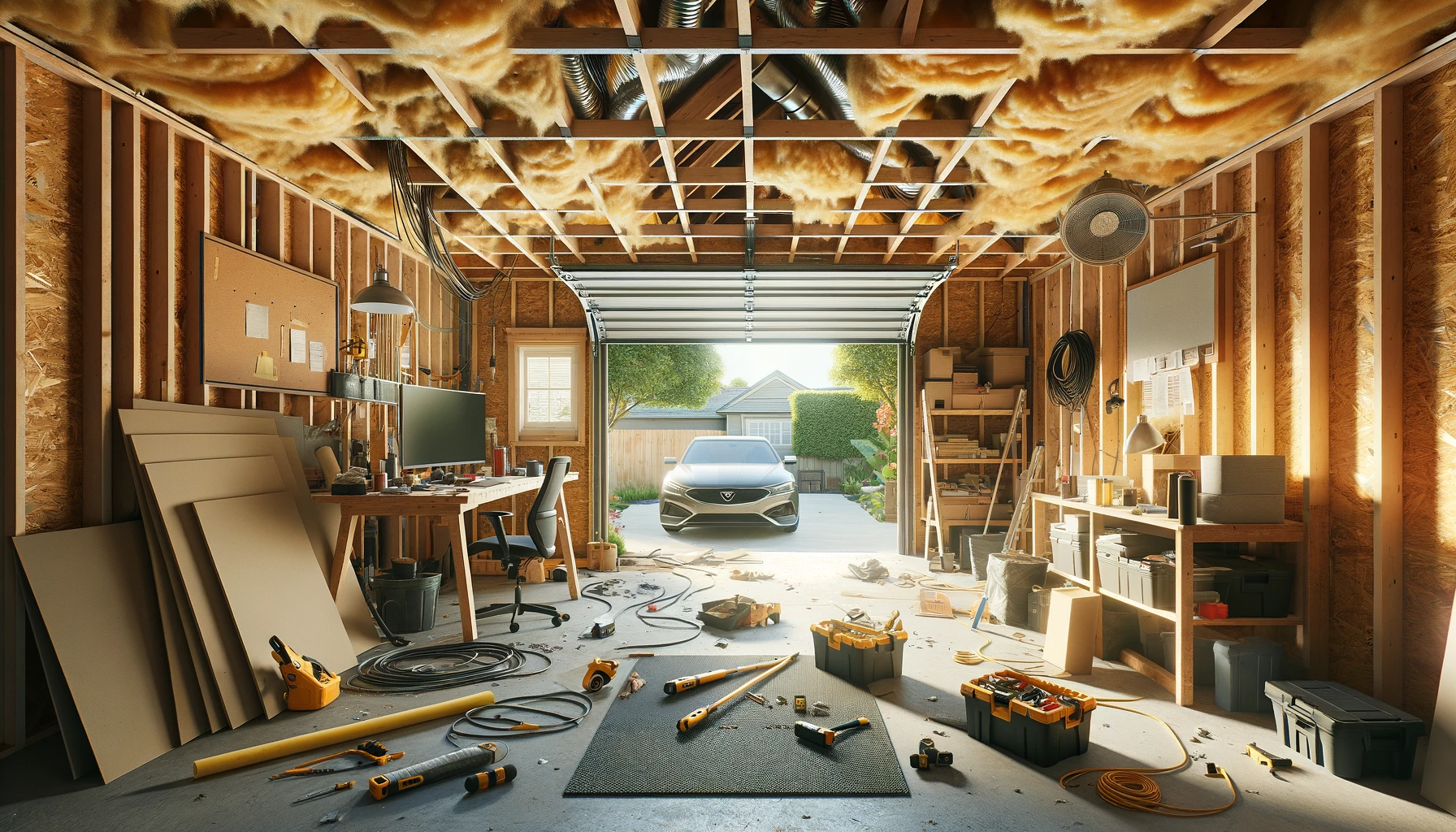
Decluttering
Before embarking on transforming your garage into a functional workspace, it’s essential to clear out unnecessary items from the area. Start by organizing belongings, setting aside what you intend to keep, and identifying items that are no longer needed. Consider donating usable items or disposing of those that are beyond repair. By doing so, you can create a clean slate for the conversion process.
Decluttering not only creates physical space but also contributes to mental clarity. Imagine walking into your newly converted home office with minimal distractions and clutter-free surroundings – this can significantly boost productivity and focus.
Furthermore, organizing your belongings during this phase will help in planning the layout of your future home office effectively. You’ll have a clear idea of how much space you have to work with once unnecessary items have been removed.
Cleaning Essentials
Once you’ve decluttered the garage space, it’s time to gather cleaning supplies for thorough cleaning tasks. Dust, dirt, grime accumulated over time must be addressed before proceeding with any renovation or conversion work in order to create an optimal working environment.
Consider investing in quality cleaning products such as all-purpose cleaners, microfiber cloths, brooms, mops, and vacuum cleaners. These tools will aid in efficiently tackling different types of surfaces within the garage while ensuring cleanliness throughout.
Moreover, if there’s significant buildup or if deep cleaning seems overwhelming due to time constraints or other commitments consider hiring professional cleaners for assistance. Professional cleaners possess expertise in handling various cleaning challenges efficiently which may arise during this stage of converting your garage into a home office.
Essential Renovations
When converting your garage into a home office, it’s crucial to address insulation needs. Begin by assessing the insulation requirements based on your climate and the seasonality of your area. Research various insulation options suitable for garage spaces, such as foam board, fiberglass batts, or spray foam. Plan for adequate insulation to ensure comfort in your home office throughout the year.
Next, consider flooring solutions that not only enhance the aesthetics of the space but also offer functionality and easy maintenance. Explore different flooring options like laminate, vinyl plank, or carpet tiles that can withstand heavy use while adding a touch of style to your home office. Before installation, address any existing flooring issues such as cracks or uneven surfaces to ensure a smooth and durable foundation for your new workspace.
Insulating your garage is essential to regulate temperature and create a comfortable environment in all seasons. Depending on where you live, extreme temperatures can make it challenging to work in an uninsulated space. By addressing these insulation needs, you’ll be able to maintain a consistent temperature within your home office without relying heavily on heating or cooling systems.
Researching insulation options suitable for garage spaces allows you to make an informed decision based on factors like cost-effectiveness and effectiveness in regulating temperature. Foam board insulation provides excellent thermal resistance and is relatively easy to install – perfect if you’re looking for a DIY solution. On the other hand, fiberglass batts are another popular choice known for their affordability and ability to fit snugly between studs.
Planning for adequate insulation involves considering both walls and ceilings when insulating the garage space; this comprehensive approach ensures maximum efficiency in creating a comfortable working environment regardless of outdoor conditions.
Exploring different flooring solutions enables you to find materials that not only complement the overall design but also meet practical requirements such as durability and ease of maintenance. Laminate flooring offers versatility with its wide range of styles while being resistant to scratches – ideal if you anticipate heavy foot traffic from frequent use.
Considering durable flooring materials means selecting options like vinyl plank that are water-resistant and effortless to clean – essential features especially when using part of a converted garage as a workspace where spills may occur during daily activities.
Addressing any existing flooring issues before installation is crucial because it sets the stage for laying down new floors without complications later on. Repairing cracks or leveling uneven surfaces guarantees proper installation of chosen flooring materials while preventing potential damage caused by underlying structural problems.
Optimizing Lighting and Electrical
When converting your garage into a home office, optimizing lighting and electrical is crucial for creating a productive and comfortable workspace. Maximizing natural light should be a priority to create a bright and inviting environment.
Maximizing natural light in your garage home office involves evaluating the placement of existing windows. Consider adding skylights or enlarging windows to bring in more sunlight. Plan window treatments such as blinds or curtains to control the amount of light entering the space based on your needs.
Artificial lighting plays an essential role in ensuring proper illumination throughout the workspace. When choosing lighting fixtures, opt for options that provide both task lighting for focused work areas and ambient lighting for overall brightness. It’s important to ensure that there are no dark corners or poorly lit spots within the office area.
A crucial aspect of optimizing your garage home office is planning the electrical setup effectively. This includes strategically placing electrical outlets to accommodate various office equipment such as computers, printers, chargers, etc., while minimizing cord clutter. Consulting with a professional electrician can help ensure safe installation practices and compliance with building codes.
Incorporating smart technology into the electrical setup can further enhance energy efficiency within your home office space. Smart power strips, programmable thermostats, and energy-efficient LED bulbs are examples of how you can integrate smart technology into your converted garage workspace.
Selecting Furniture and Decor
When converting your garage into a home office, furniture and decor play a crucial role in creating a comfortable and productive workspace. Prioritizing ergonomic choices is essential to support your well-being while working. Opt for adjustable seating options that provide proper lumbar support to prevent back strain. Invest in an ergonomic desk setup that allows you to work comfortably for extended periods without causing physical stress.

Creating a workspace that promotes good posture is vital for long-term health. Consider incorporating standing desks or convertible desks that allow you to switch between sitting and standing positions throughout the day. This variety can help reduce the risk of musculoskeletal issues associated with prolonged sitting.
In addition to ergonomic considerations, it’s important to focus on the aesthetic appeal of your home office design. Defining a cohesive vision for your workspace ensures that it reflects your personal style while fostering creativity and focus. Choose colors, decor, and furnishings that resonate with your preferences and inspire productivity.
To create an environment conducive to concentration, incorporate elements such as artwork, plants, or motivational quotes strategically within the space. These additions can enhance the visual appeal of the home office while serving as sources of inspiration during work hours.
When selecting furniture for your converted garage home office, consider multifunctional pieces that optimize space utilization without compromising on comfort or style. For instance, investing in storage-integrated desks or wall-mounted shelves can help keep the area organized while maximizing available square footage.
Technology for Productivity
In order to convert your garage into a home office, it’s crucial to consider the technological aspects that will enhance productivity in the space. This includes ensuring reliable internet access and setting up essential office equipment strategically.
Internet Access
Reliable internet connectivity is essential for any home office. When converting your garage, it’s important to ensure that the space has strong and consistent Wi-Fi coverage. If you find that the existing Wi-Fi signal doesn’t reach the garage effectively, consider using Wi-Fi extenders or mesh network systems to amplify the signal throughout the space. Alternatively, if feasible, you may also explore hardwired connections by running Ethernet cables from your main router to the converted garage.
Seamless integration of technology is vital for a functional home office setup. Plan ahead for how you’ll incorporate devices such as computers, printers, and other peripherals into your workspace. This might involve creating dedicated areas with easy access to power outlets and network connections.
Equipment Setup
When setting up equipment in your newly converted home office, carefully consider placement and organization of essential items such as desks, chairs, computers, printers, scanners etcetera. Efficient cable management is key not only for aesthetics but also for safety purposes; well-organized cables minimize clutter and reduce tripping hazards.
Designate specific areas within your home office where different types of equipment will be located – this can help streamline workflows and maintain an organized environment conducive to productivity. For example:
- Create a designated area near an electrical outlet specifically for printer setup.
- Ensure there’s sufficient desk space near power sources for computer setups.
- Consider placing scanners within arm’s reach of workstations where documents are frequently handled.
Storage and Organization
When converting your garage into a home office, storage space is crucial for maintaining an organized and functional workspace. Incorporating versatile shelving units can help optimize storage in the home office. Customize the shelving configurations based on your specific storage needs and the available space. For instance, if you have various items of different sizes to store, adjustable shelves can be beneficial.
Utilizing vertical wall space efficiently with shelving installations is another effective way to maximize storage in a converted garage home office. This approach not only keeps essential items within easy reach but also frees up valuable floor space for other purposes, such as setting up a comfortable workstation or incorporating additional furniture pieces.
Strategically utilizing wall-mounted storage solutions further contributes to freeing up floor space in the garage home office. By installing wall-mounted cabinets or floating shelves, you can keep frequently used items easily accessible while keeping them off the floor. This not only helps maintain an uncluttered environment but also makes it easier to clean and maintain the workspace.
In addition to maximizing storage, considering multifunctional furniture pieces that maximize utility in limited space is essential when converting a garage into a home office. For example, investing in a desk with built-in drawers or shelves provides both workspace and storage solutions without taking up additional room.
Implementing organizational systems is crucial for keeping clutter at bay in your newly converted garage home office. Utilize bins, baskets, file organizers, and drawer dividers to categorize and store various items effectively. Labeling these organizational tools can further streamline access to stored items while maintaining an aesthetically pleasing environment.
Comfort and Climate Control
When converting your garage into a home office, heating and cooling are crucial for year-round comfort. Evaluate the heating options available, such as electric or gas-powered heaters. Consider portable space heaters for targeted warmth during colder months.
Proper insulation is essential to regulate temperature effectively. Ensure that the walls and ceiling are well-insulated to prevent heat loss in winter and minimize heat gain in summer. This helps maintain a comfortable working environment throughout the year.
Explore energy-efficient HVAC solutions tailored to garage conversions. Ductless mini-split systems offer both heating and cooling, providing precise control over the temperature in your new home office space without extensive ductwork installation.
Addressing ventilation needs is equally important to maintain air quality within the converted space. Install exhaust fans to remove stale air and introduce fresh outdoor air into the room. Window ventilation options can also be considered based on your specific requirements.
Prioritize adequate airflow by strategically placing windows or installing additional vents if necessary. Proper ventilation not only ensures a comfortable working environment but also contributes to overall health by reducing indoor air pollutants.
Balancing Work-Life Boundaries
Creating a home office in your garage involves more than just setting up a desk and chair. It’s essential to establish boundaries that separate your work life from your personal life, ensuring productivity and maintaining a healthy work-life balance.
Separate Entrances
When converting your garage into a home office, consider exploring options for creating a separate entrance to the workspace. This can be achieved by installing a door or designing an entryway that is distinct from the main entrance to your house. By doing so, you can create a physical boundary between your professional space and the rest of your home.
Plan entryways that provide privacy while maintaining accessibility. For example, you could install blinds or curtains on windows facing the main house to block out distractions during work hours. Consider incorporating security measures such as keyless entry systems or motion-activated lighting to ensure safety and peace of mind.
Noise Reduction
To minimize external noise disturbances in your garage-turned-home-office, it’s crucial to implement effective soundproofing strategies. Consider using acoustic materials such as sound-absorbing panels or insulation designed specifically for noise reduction during construction.
Choose furnishings and decor elements that contribute to noise reduction, such as area rugs, heavy drapes, or upholstered furniture which absorb sound rather than reflecting it like hard surfaces do. These elements help create a quiet work environment conducive to concentration without being disrupted by household noises.
Create an environment where you can focus on tasks without being interrupted by everyday sounds from other parts of the house—this is especially important if you have family members at home during working hours.
Customizing Your Office Space
Personal touches play a crucial role in making the space feel like your own. You can infuse your personal style by adding decor, artwork, or meaningful accents that resonate with you. For instance, if you find inspiration in nature, consider incorporating elements like potted plants or landscape paintings to bring a sense of tranquility and creativity to your dedicated home office.
To create an environment that fosters productivity and calmness, it’s essential to integrate elements that inspire creativity or evoke a sense of peace. This could include using soothing color palettes, comfortable furniture, and soft lighting. By carefully selecting these components for your home office, you can establish an atmosphere conducive to focused work while also promoting relaxation during breaks.
In addition to infusing the space with personal touches and calming elements, showcasing your interests through curated displays or collections can add character to your workspace. For example, if you’re passionate about photography, consider creating a gallery wall featuring your favorite images. This not only adds visual interest but also serves as a source of motivation within the confines of your home office.
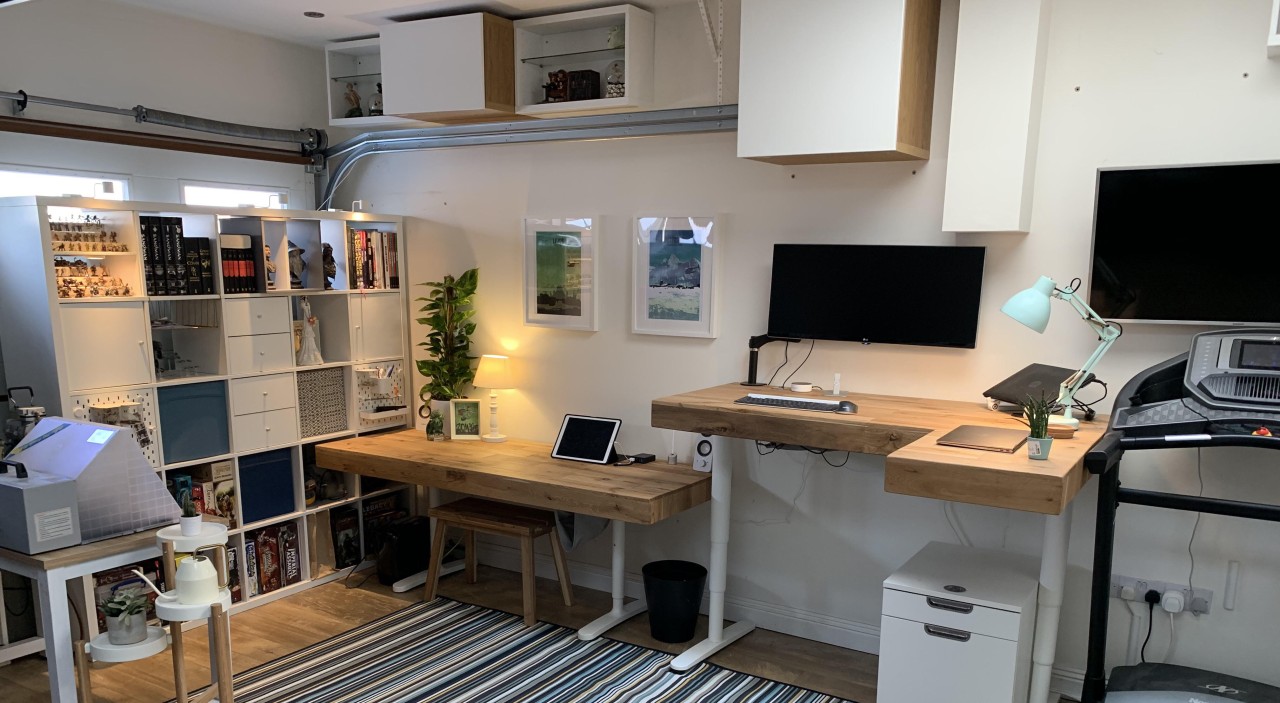
Final Remarks
Congratulations on reaching the end of our guide on converting your garage into a home office! You’ve covered crucial aspects like assessing your space, planning the conversion, navigating permits and regulations, and optimizing lighting and electrical setups. As you navigate the next steps of selecting furniture, incorporating technology for productivity, and customizing your office space, remember that creating a productive work environment is a journey, not a destination. Embrace the process and enjoy the transformation of your garage into a functional and inspiring workspace.
Now it’s time to roll up your sleeves and dive into the exciting phase of selecting furniture, incorporating technology for productivity, and adding personal touches to make your home office uniquely yours. Don’t rush it; take the time to create a space that motivates and inspires you. Happy converting!
Frequently Asked Questions
FAQ
How can I assess if my garage is suitable for conversion into a home office?
To assess your garage, consider factors like size, ventilation, and natural light. Evaluate the structural integrity and potential for insulation. Think about how you can incorporate windows or skylights to brighten the space.
What are the essential renovations needed to convert a garage into a home office?
Essential renovations may include insulating walls and ceiling, installing flooring suitable for an office environment, adding HVAC systems for climate control, and ensuring proper electrical wiring. Consider soundproofing if necessary.
Do I need permits to convert my garage into a home office?
Yes, you’ll likely need permits from your local building authority before starting any conversion work in your garage. Check with them to understand the specific regulations and requirements related to converting residential spaces.
How do I optimize lighting in my converted garage home office?
Maximize natural light by adding windows or skylights where possible. Complement this with well-placed artificial lighting such as overhead fixtures or task lamps. Consider LED bulbs for energy efficiency and adjustable brightness options.
What technology should I consider incorporating into my new home office space?
Think about integrating high-speed internet access, adequate power outlets, efficient Wi-Fi connectivity extenders (if needed), and tech-friendly furniture solutions like built-in charging stations or cable management systems.





